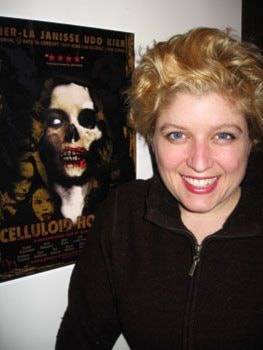Northerners, whether they’re from the Yukon or Alaska, have to put up with clichés about themselves and the land they call home.
“There is an authentic version from which the clichés are drawn,” said Dan O’Neill, an Alaskan author who was in Whitehorse last week.
It’s this authentic version that he tries to portray in his books.
At the MacBride Museum on Friday, before reading from his newest work, A Land Gone Lonesome, he displayed a few examples of people and authors that didn’t get it.
On the projector screen behind him flashed the image of Timothy Treadwell, the bear enthusiast from the film Grizzly Man.
He also spoke of Jon Krakauer’s Into the Wild, which tells of the life and death of Chris McCandless.
In both cases, the main characters took a very naïve and flippant approach to life in the North and end up dying as a result, he said.
In the 1970s many young people took to the North to learn to live off the land and follow in the snowshoe steps of their pioneering forefathers.
In his latest book, O’Neill uses stories from his frequent trips down the Yukon River between Dawson and Circle City to set the scene for a history of those people.
The characters in O’Neill’s book are no less ignorant in the beginning than Treadwell and McCandless were.
Most of “the river people” came from the city, and had little knowledge of the North or what it took to live there, he said.
One couple spent the winter camped under a parachute, and another man was surprised to learn there were fish in the Yukon River that could be caught and eaten.
Despite their ignorance, the young pioneers desired to understand and sought information from local elders.
They learned to fish, hunt, and trap and they survived.
However these people are now disappearing — something that O’Neill laments in the book and blames on government policies, especially on the other side of the border.
The book began when O’Neill received a $50,000 grant to travel the river and give a report of the natural history of the area.
It was also a history of the people.
O’Neill considers his book to be more of a literary work than academic history.
“Writing it in the first person allowed me to be more painterly,” he said.
“It’s more personal, informal and idiosyncratic.”
O’Neill moved to Alaska about the same time and built and rented out cabins just outside of Fairbanks.
He hopes that his first-hand knowledge of the land and its people will offer a refreshing view.
However he did run into some frustration trying to adapt the book for a southern audience.
O’Neill recalled a note left in the margins of a section of the book talking about a salmon run.
His New York editor was confused, “Salmon can run?”
O’Neill, who is no stranger to being misunderstood, just shook his head.
He was born and raised in San Francisco and as a kid wanted nothing more than to grow up to be a beatnik like the bereted painters he would see living on houseboats in the bay area.
When he chose to go to the nearby university in Berkley where he studied literature, O’Neill found himself in the heart of the hippie movement.
He remembers free concerts in Golden Gate Park with jugs of wine. There he saw Janis Joplin and Jefferson Airplane.
“It was a generation of activists but historians portray it as hedonistic and selfish,” said O’Neill.
“Never before had so many kids studied the social sciences. They took careers in the service of people.”
He pointed to all the positive changes brought on by the movement, such as women’s rights and the anti-war protests.
These ideals are under attack, he said, by conservative historians and the “reactionary bastards that are in charge now.”
A Land Gone Lonesome is O’Neill’s third book.
Firecracker Boys, his first, is about Project Chariot, a little-known plan to use hydrogen bombs to blast a new harbour in Alaska.
This potential Chernobyl of the North was stopped by the native people whose way of life would have been destroyed, and by two scientists from the University of Alaska.
The conservationists were fired from their jobs as a result, but are now considered to be the forerunners of the environmental movement.
“The official version was the Atomic Energy Commission version and the administration of the University of Alaska version,” said O’Neill.
His book was an effort to correct the record and address a social injustice.
“They came up here with H-Bombs in their back pocket and got faced down by guys with harpoons,” he added.
The book won O’Neill awards, including Alaska Historian of the Year, and a second edition will go into print soon.
Leonardo DiCaprio and HBO have purchased movie options for the story.
A movie about Alaska that’s written by a local and doesn’t play into existing clichés will be refreshing for O’Neill and others like him.
Perhaps one day the story of the river people and their northern homesteading will also be adapted to the big screen.
It’s a story that O’Neill believes will hit home for Canadians and Americans alike.
“It’s a part of our national psyche; we look to the frontier as a place to reinvent ourselves,” he said.
“They went west, ran into an ocean and then went north.”
